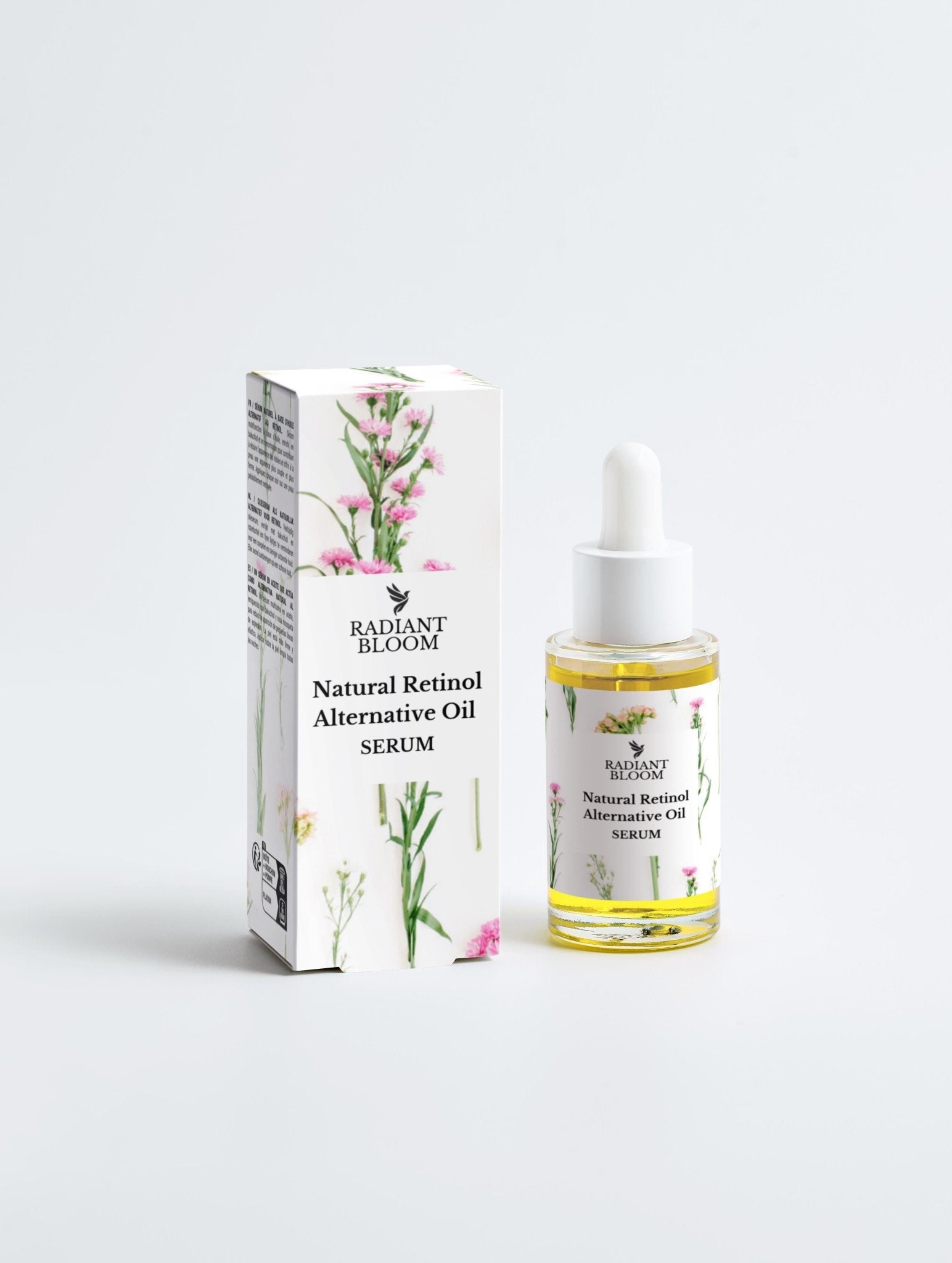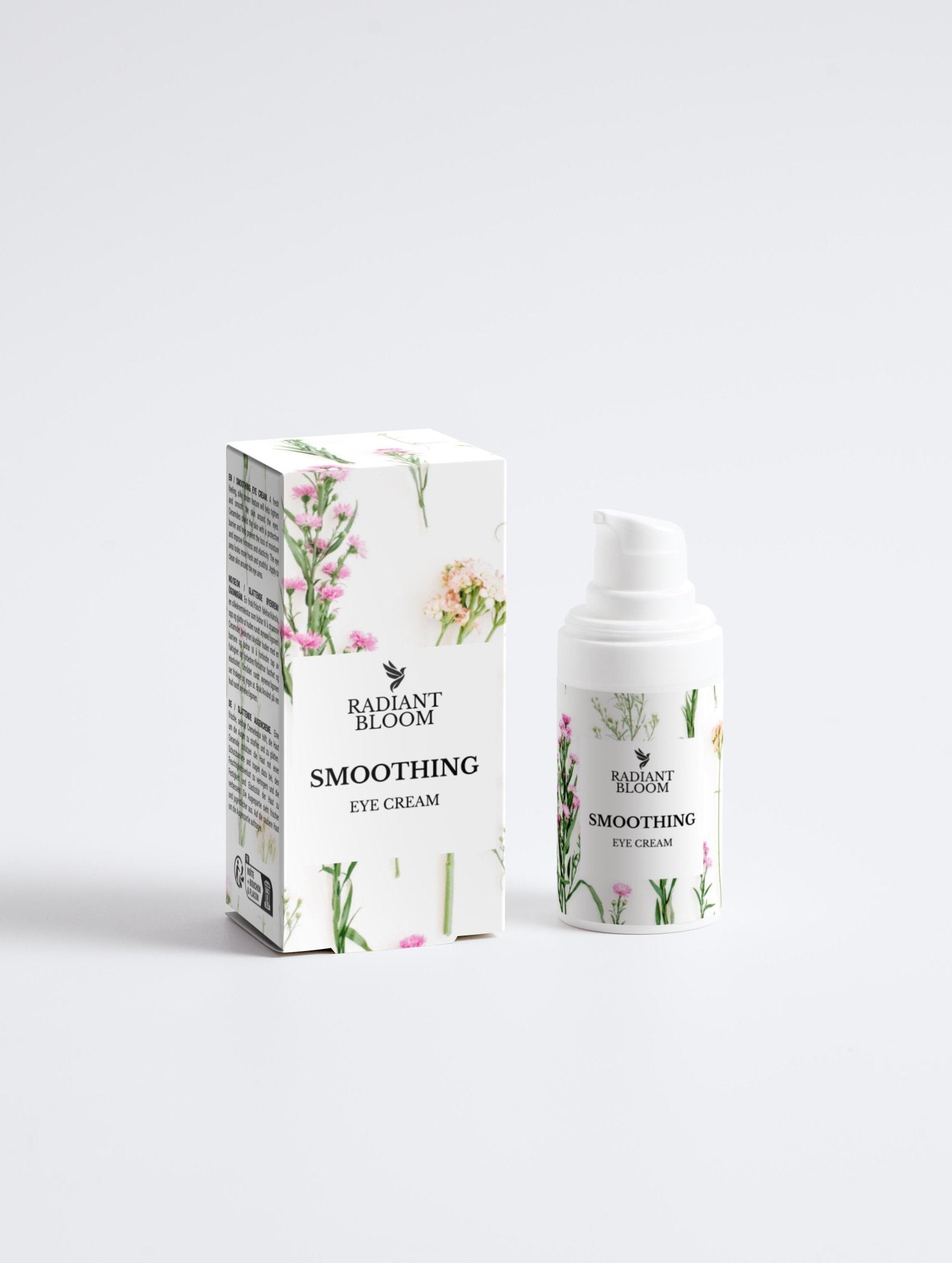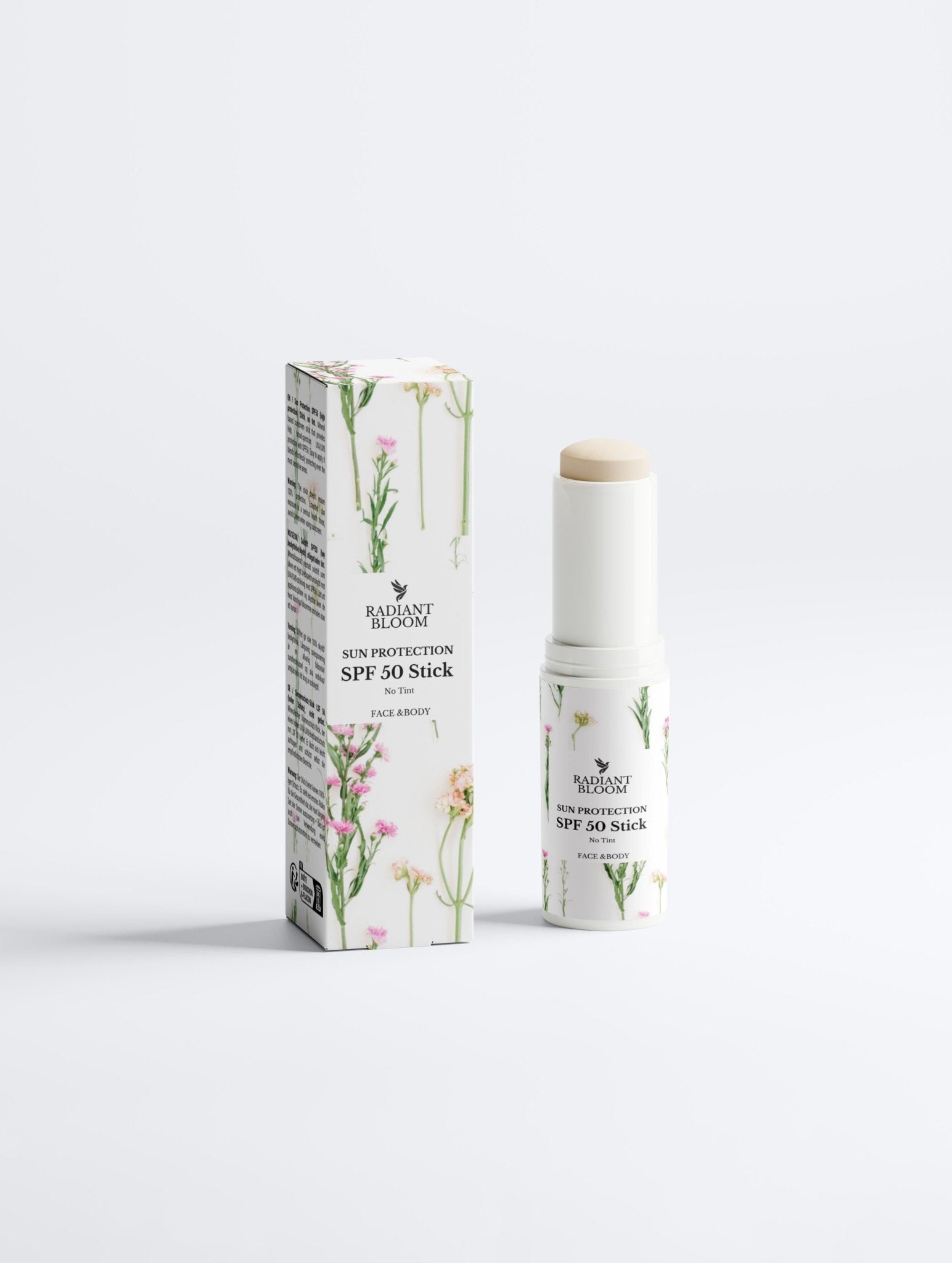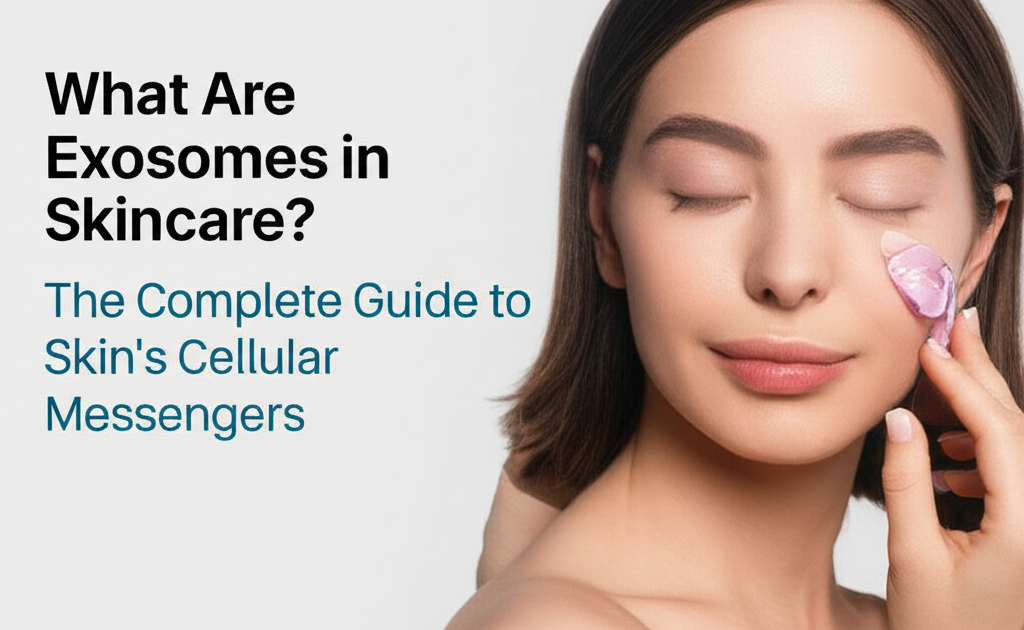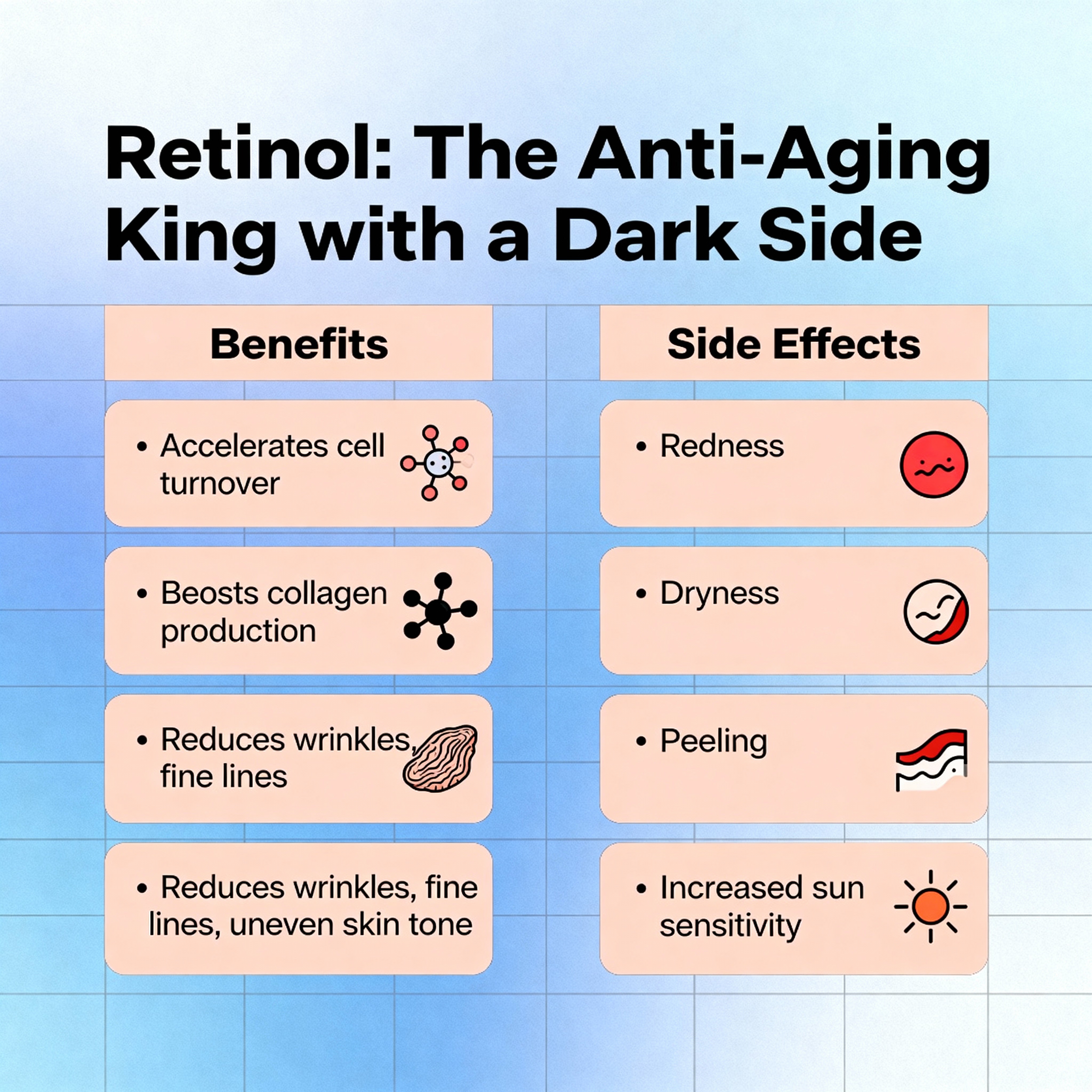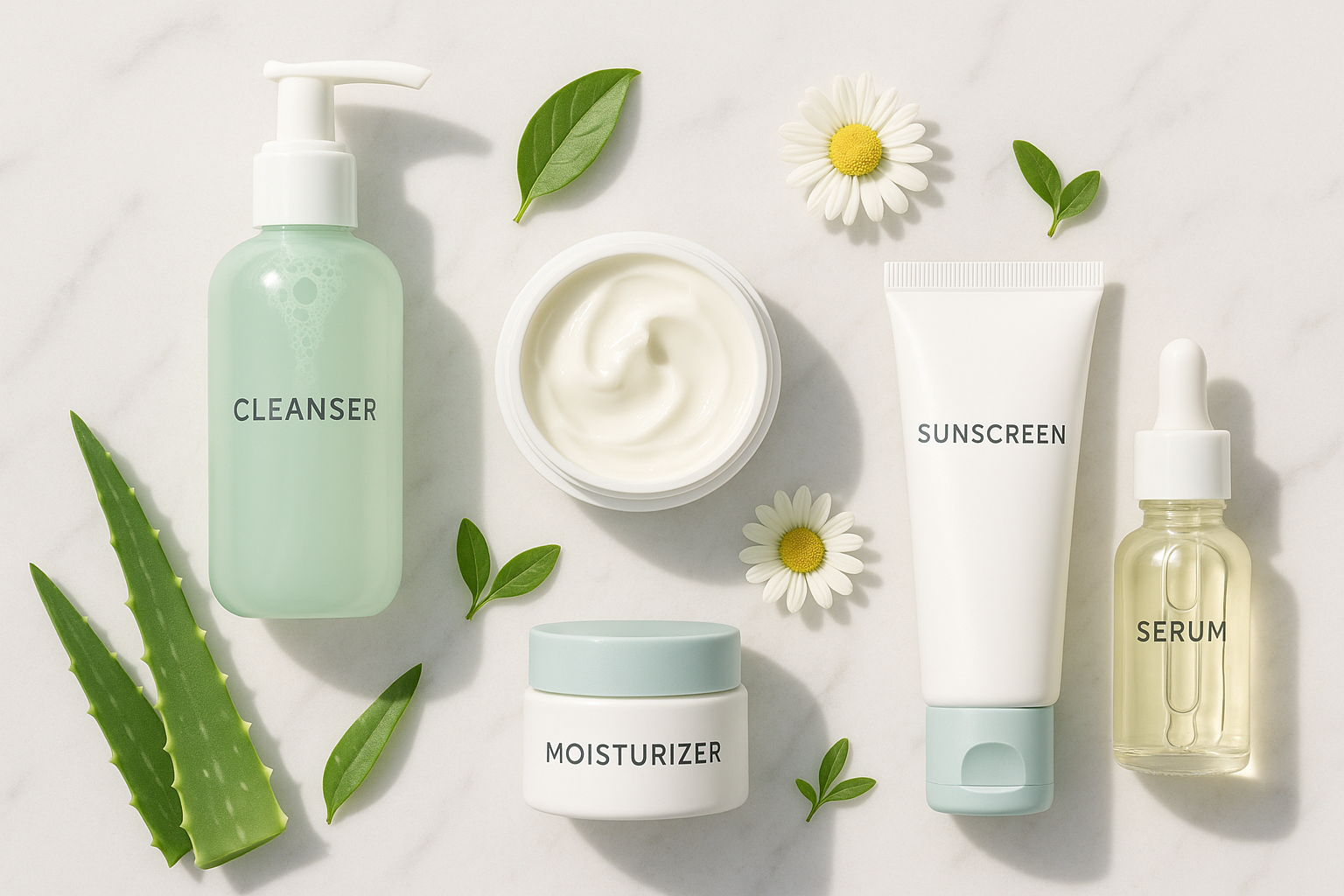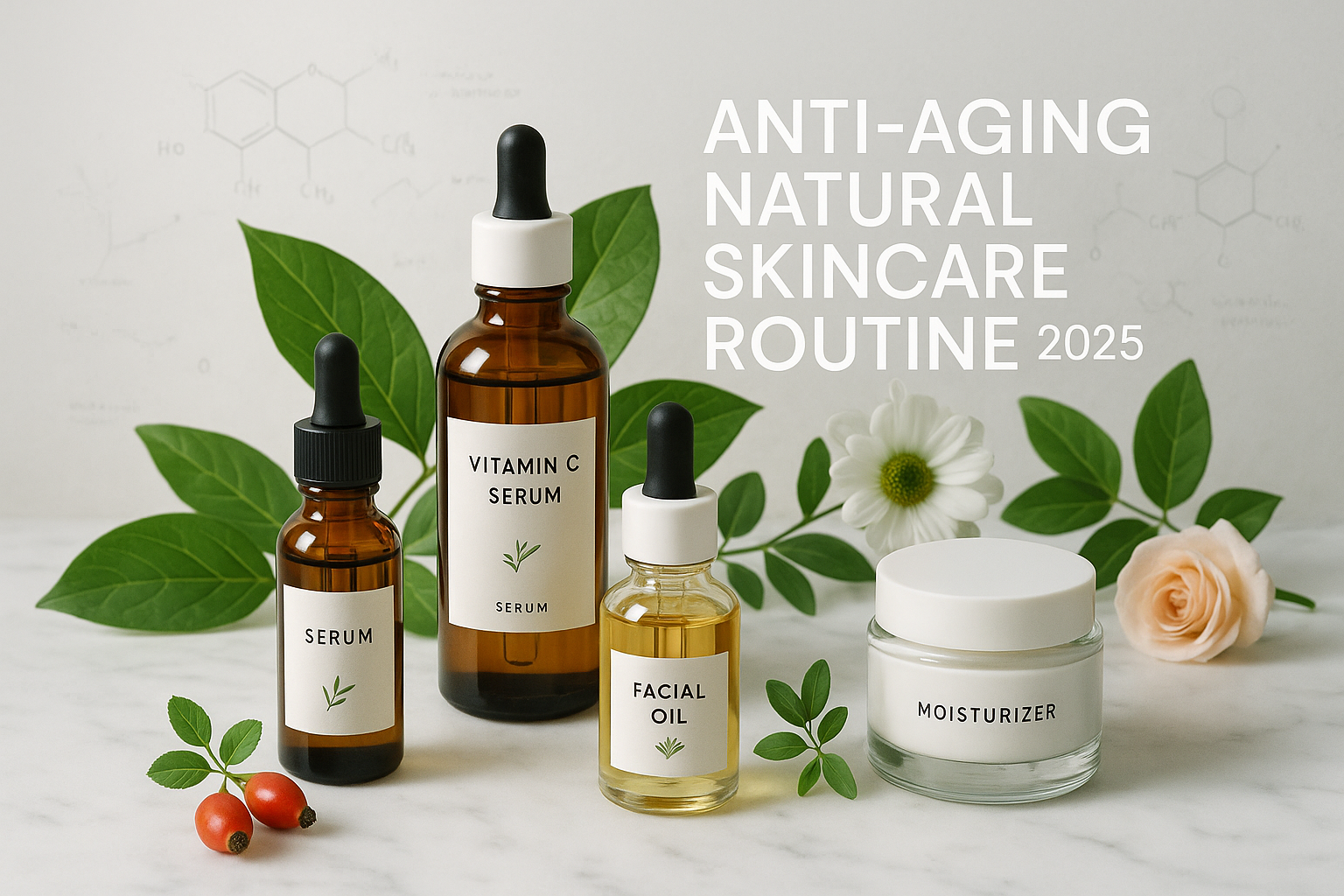What Are Exosomes in Skincare? The Complete Guide to Skin's Cellular Messengers
The Exosome Revolution in Skincare

Exosomes represent the cutting edge of skincare science, promising unprecedented regenerative benefits. But what exactly are these microscopic messengers, and should you incorporate them into your routine?
The Emergence of Exosome Technology
- First appeared in medical aesthetics (2018)
- Skincare adoption began in 2021
- Market projected to reach $850 million by 2027
- Over 200 exosome products launched in 2024
- Celebrity endorsements driving awareness
Why Exosomes Now?
- Advanced extraction technology making production feasible
- Post-pandemic focus on skin health and regeneration
- Consumer demand for clinical-grade results at home
- Natural beauty movement embracing plant exosomes
- Scientific validation through peer-reviewed studies
- Sustainability concerns driving plant-based options
The Promise vs Reality
Marketing Claims:
- “Fountain of youth in a bottle”
- “Stem cell technology without stem cells”
- “Reverses aging at cellular level”
Scientific Reality:
- Significant regenerative potential confirmed
- Results vary by source and concentration
- Quality control remains challenging
- Long-term effects still being studied
- Natural alternatives showing promise
Understanding Exosomes: The Science
To understand exosomes in skincare, we need to dive into cellular biology:

What Exactly Are Exosomes?
- Size: 30–150 nanometers (1000× smaller than skin cells)
- Structure: Lipid bilayer vesicles
- Origin: Released by all cell types
- Contents: Proteins, lipids, RNA, growth factors
- Function: Intercellular communication
Think of Them As: Cellular text messages—carrying specific instructions from one cell to another, telling them how to behave, repair, or regenerate.
The Discovery Journey
- 1983: First discovered in sheep reticulocytes
- 1996: Immune function role identified
- 2007: RNA cargo discovery
- 2013: Nobel Prize for vesicle trafficking
- 2019: First cosmetic applications
- 2025: Mainstream skincare adoption
How Exosomes Differ from Cells
| Feature | Exosomes | Stem Cells | Growth Factors |
|---|---|---|---|
| Size | 30–150nm | 10,000nm+ | 1–10nm |
| Living | No | Yes | No |
| Stability | High | Low | Moderate |
| Storage | Easy | Difficult | Moderate |
| Risk | Minimal | Higher | Low |
| Cost | High | Very High | Moderate |
The Cargo They Carry
- Proteins: Collagen stimulators, enzymes
- Lipids: Ceramides, cholesterol
- microRNA: Gene expression regulators
- Growth factors: EGF, FGF, VEGF
- Cytokines: Anti-inflammatory signals
- Heat shock proteins: Stress response
How Exosomes Work in Skincare

Understanding the mechanism helps appreciate their potential:
Cellular Communication System
- Release: Parent cells package and release exosomes
- Travel: Exosomes navigate through tissue
- Recognition: Target cells identify compatible exosomes
- Fusion: Exosomes merge with recipient cells
- Delivery: Cargo released inside target cell
- Action: Cell behavior modified per instructions
Skin-Specific Actions
- Fibroblast stimulation: 300% increase in collagen production
- Keratinocyte proliferation: Faster skin renewal
- Melanocyte regulation: Even skin tone
- Endothelial activation: Improved circulation
- Immune modulation: Reduced inflammation
The Penetration Advantage
- Ultra-small size passes through skin barrier
- Lipid structure compatible with skin
- Natural cellular uptake mechanisms
- No need for penetration enhancers
- Survive longer than naked growth factors
Clinical Data: 65% deeper penetration than standard peptides; 8× longer activity than free growth factors; measurable effects within 24 hours; peak benefits at 4–6 weeks.
Types of Exosomes Used in Skincare
Not all exosomes are created equal:
Human-Derived Exosomes
- Mesenchymal Stem Cells (MSC) — Most common in luxury products; high growth factor content; excellent regenerative properties; ethical concerns for some.
- Adipose (Fat) Derived — From liposuction byproducts; rich in regenerative factors; good for volume/plumping; limited availability.
- Platelet-Rich Plasma (PRP) — From blood products; healing focused; used in medical aesthetics; not vegan-friendly.
Plant-Derived Exosomes
Natural Sources:
- Ginseng Exosomes — Anti-aging, increases cellular energy, brightening effects, sustainable sourcing.
- Rose Exosomes — Hydrating, anti-inflammatory, suitable for sensitive skin, pleasant natural scent.
- Apple Exosomes — Antioxidant-rich, promotes longevity, protects against UV damage.
- Grape Exosomes — Resveratrol delivery, anti-aging benefits, antioxidant protection.
- Centella Asiatica Exosomes — Healing, reduces inflammation, strengthens barrier — used by Radiant Bloom Organic.
Synthetic/Bioengineered Exosomes
- Consistent composition
- Scalable production
- No ethical concerns
- May lack complexity of natural sources
- Lower cost potential
Plant-Based vs Human-Derived Exosomes
Comparison Chart
| Aspect | Plant-Based | Human-Derived |
|---|---|---|
| Efficacy | Good–Excellent | Excellent |
| Safety | Very High | High |
| Ethics | No concerns | Some concerns |
| Vegan | Yes | No |
| Cost | Moderate–High | Very High |
| Stability | Excellent | Good |
| Sustainability | High | Variable |
| Research | Growing | Extensive |
| Availability | Increasing | Limited |
Plant Exosome Advantages
- No ethical concerns about human tissue use
- Vegan and cruelty-free certification possible
- Sustainable production from agricultural byproducts
- Lower risk of disease transmission
- Unique phytochemicals provide additional benefits
- More affordable than human-derived
- Better stability in formulations
When Human-Derived Excel
- Post-procedure healing
- Severe photodamage
- Deep wrinkle treatment
- Medical-grade applications
- Rapid results needed
The Natural Compromise: Radiant Bloom Organic uses plant-derived exosome technology combined with other natural actives for comparable results without ethical concerns.
Benefits of Exosome Skincare
Anti-Aging Benefits
- Wrinkle Reduction: 45% decrease in wrinkle depth (12 weeks)
- Stimulates collagen types I and III
- Improves elastin production
- Enhances skin thickness
Clinical Study Results: Fine lines: 67% improvement; Deep wrinkles: 43% improvement; Skin firmness: 52% increase; Elasticity: 38% improvement.
Healing and Regeneration
- 50% faster wound healing
- Reduced inflammation markers
- Minimized scarring
- Post-procedure support
Skin Barrier Enhancement
- Increases ceramide production
- Reduces water loss (TEWL)
- Strengthens tight junctions
- Improves microbiome health
Results Timeline: Week 1: Hydration improvement; Week 2: Reduced sensitivity; Week 4: Visible barrier repair; Week 8: Long-term resilience.
Brightening Effects
- Regulates melanin production
- Reduces dark spots
- Evens skin tone
- Prevents future discoloration
Anti-Inflammatory Action
- Reduces cytokine production
- Calms reactive skin
- Suitable for rosacea
- Helps with acne inflammation
Exosomes vs Other Anti-Aging Ingredients
Exosomes vs Retinol
| Factor | Exosomes | Retinol |
|---|---|---|
| Mechanism | Cell communication | Cell turnover |
| Irritation | Minimal | Common initially |
| Results Timeline | 4–6 weeks | 12+ weeks |
| Pregnancy Safe | Plant-based yes | No |
| Sun Sensitivity | No | Yes |
| Cost | Higher | Lower |
Verdict: Exosomes gentler; retinol more extensively studied.
Exosomes vs Peptides
| Factor | Exosomes | Peptides |
|---|---|---|
| Size | 30–150nm | 1–10nm |
| Complexity | Very complex | Simple chains |
| Delivery | Complete package | Single molecules |
| Stability | High | Variable |
| Research | Emerging | Extensive |
Verdict: Exosomes are more comprehensive; peptides are well proven.
Exosomes vs Growth Factors
| Factor | Exosomes | Growth Factors |
|---|---|---|
| Stability | Protected in vesicle | Fragile |
| Penetration | Superior | Limited |
| Duration | Long-lasting | Short-lived |
| Safety | High | Variable |
| Cost | Higher | High |
Verdict: Exosomes offer a superior delivery system.
Exosomes vs Vitamin C
| Factor | Exosomes | Vitamin C |
|---|---|---|
| Primary Benefit | Regeneration | Antioxidant |
| Stability | Excellent | Poor |
| Brightening | Good | Excellent |
| Collagen | Direct stimulation | Cofactor |
| Irritation | Rare | Common at high % |
Verdict: Use together for synergy.
How to Use Exosome Products
Morning Routine with Exosomes
- Gentle Cleanser — Prep skin
- Essence/Toner — Hydrate
- Exosome Serum — Apply to clean skin
- Wait 2–3 minutes — Allow absorption
- Vitamin C — Additional antioxidant
- Moisturizer — Velvety Texture Face Cream
- SPF — Essential protection
Evening Routine with Exosomes
- Double Cleanse — Thorough removal
- Chemical Exfoliant (2–3× weekly) — Better penetration
- Exosome Treatment — Higher concentration
- Peptide Serum — Synergistic effects
- Face Oil — Glow & Hydrate Oil
- Night Cream — Lock in actives
Application Techniques
- Amount: 2–3 drops for face
- Method: Press, don’t rub
- Storage: Room temperature
- Frequency: 1–2× daily; Duration: minimum 8 weeks
Pro Tips: Apply to slightly damp skin; use within 6 months of opening; don’t mix directly with strong acids; layer thinnest to thickest.
Combining with Other Actives
- Excellent: Exosomes + Peptides; Exosomes + Niacinamide; Exosomes + Hyaluronic Acid; Exosomes + Bakuchiol
- Avoid Together: Strong acids (wait 30 minutes); Benzoyl peroxide; High concentration retinoids (alternate nights)
Natural Sources of Exosome-Like Benefits
Plant Stem Cells
- Swiss apple, grape, edelweiss, and argan stem cells protect skin stem cells, delay cellular aging, and improve regeneration.
Fermented Ingredients
- Fermentation yields smaller molecules, bioactive compounds, natural preservation, and enhanced penetration: galactomyces, bifida ferment lysate, lactobacillus, fermented rice water.
Botanical Extracts
- Centella Asiatica, Gotu Kola, Sea Fennel, Snow Algae — mimic cell-communication benefits. Used by Radiant Bloom Organic.
Traditional Practices
- Rice water, snail mucin alternatives, bee products (royal jelly), and mushroom extracts (beta-glucans) support signaling and repair.
Safety and Regulations
Current Regulations
- FDA: Cosmetic ingredient; must be safe for intended use; no drug claims.
- EU: Stricter documentation; Korea/Japan: rigorous testing; Australia: TGA monitoring.
Safety Considerations
- Source verification essential
- Contamination risk if poor quality
- Allergic reactions possible
- Pregnancy/nursing — consult a doctor
- Immunocompromised — use caution
Quality Indicators
- Third-party testing; GMP certification; clear sourcing; batch tracking; stability data — standards followed by Radiant Bloom Organic.
Red Flags
- No source disclosure; unrealistic claims; no preservation; clear packaging; extremely low prices.
Choosing Exosome Products
What to Look For
- Concentration: 5–20% optimal
- Source: Clearly stated
- Extraction method: Gentle, low-heat methods
- Packaging: Airless, opaque
- Supporting ingredients: Synergistic actives
- Clinical testing: Third-party verified
Price Ranges
- Entry ($50–100); Mid-range ($100–250); Premium ($250–500); Medical grade ($500+).
- Value: Plant-based options offer strong value — see Radiant Bloom Organic.
Product Types
- Serums: Highest concentration; layer under moisturizer.
- Creams: Lower concentration; better for sensitive skin.
- Masks: Intensive weekly treatment; immediate results.
- Ampoules: Single-use freshness; consistent dosing.
Frequently Asked Questions
What exactly are exosomes in simple terms?
Exosomes are tiny bubbles released by cells that carry messages to other cells, telling them to regenerate, produce collagen, or heal—like a cellular email system.
Are plant exosomes as effective as human-derived ones?
Plant exosomes can be highly effective, offering 70–80% of the benefits of human-derived exosomes with advantages like sustainability and unique phytochemicals. Radiant Bloom Organic uses advanced plant exosome technology.
How long before I see results from exosome skincare?
Initial hydration and glow: 1–2 weeks. Noticeable anti-aging: 4–6 weeks. Optimal: ~12 weeks of consistent use.
Can I use exosomes with retinol?
Yes, but time the layers: apply exosomes first; wait 20–30 minutes before retinol, or alternate nights if sensitive.
Are exosomes safe during pregnancy?
Plant-based exosomes are generally considered safe; human-derived options lack sufficient data. Consult your healthcare provider.
Do exosomes replace other anti-aging ingredients?
No—they work best alongside vitamin C, peptides, and niacinamide as part of a complete routine.
Why are exosome products so expensive?
Extraction, purification, quality control, and research are costly. Plant-based options can be more accessible.
Can exosomes help with acne scars?
Yes, by promoting regeneration and collagen, many users see 30–40% improvement after ~12 weeks.
How do I know if an exosome product is real?
Look for clear source disclosure, stated concentration, third-party testing, realistic pricing, and reputable brands.
Are there any side effects?
Rarely: mild redness, tingling, or temporary breakouts during adjustment. Patch test first and start slowly.
Your Exosome Skincare Journey
Week 1–2: Introduction
- Start once daily on clean skin; monitor for reactions; take before photos.
Week 3–4: Building
- Increase to twice daily; add supporting products; note initial changes.
Week 5–8: Optimization
- Integrate fully; consider higher concentration; document improvements; add complementary actives.
Week 9–12: Results
- Evaluate transformation; take after photos; adjust routine as needed; share success.
The Future of Exosomes in Skincare
Emerging Trends
- Customized exosomes
- Oral exosome supplements
- Hair growth applications
- Body care extensions
- Combination therapies
Natural Evolution
- More sustainable sources; enhanced extraction; standardized concentrations; clinical validation; affordability.
What’s Next (2025–2027)
- Mainstream adoption; price reduction; regulatory clarity; DIY remains implausible; natural dominance.
Special Offer: Next-Generation Natural Skincare
Exclusive for Blog Readers: Subscribe and receive 15% off your first Radiant Bloom Organic order, plus our Guide to Advanced Natural Actives and early access to new products.
- Plant stem cell serums
- Velvety Texture Face Cream with peptides
- Glow & Hydrate Facial Oil for barrier repair
- Natural alternatives to exosomes
Why Choose Radiant Bloom: 100% Natural, Vegan; advanced botanical tech; eco-certified; free shipping $150+; 30‑day money‑back guarantee. Contact: info@radiantbloomorganic.com
Conclusion: The Exosome Era Has Arrived
Exosomes represent a genuine breakthrough in skincare science, offering regenerative benefits through cellular communication. Whether you choose human-derived, plant-based, or botanical alternatives, quality and transparency matter. Brands like Radiant Bloom Organic combine cutting-edge science with a natural philosophy for results without compromise.


